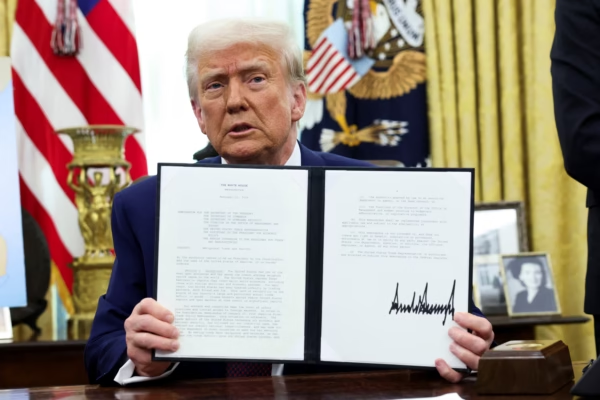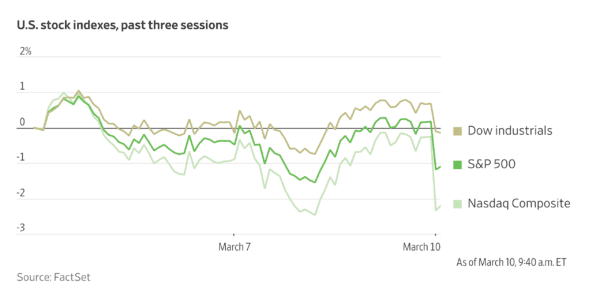The Madman theory suggests that being perceived as a Madman can help make pretty “incredible threats more credible.” And although recent research has stressed the deficiencies of the Madman theory and demonstrated why it does not work, Trump still vows to create a foreign policy shaped around uncertainty, unpredictability, and disproportionate responses.
Associated with former U.S. President Richard Nixon during the Cold War, the Madman theory revolves around the idea that leaders can take advantage in the international arena by portraying the image of a leader willing and capable of using disproportionate or extreme responses against adversaries to obtain concessions in negotiations, make other countries back down, and respond in favour of the so-called Madman.
Nuclear weapons laid the foundations for the MAD (Mutually Assured Destruction) –man theory. It was critical for policymakers and leaders to make the threat of this new powerful weapon credible. If not, what would be the point of its existence? And although today’s world dynamics are not the same as those of the Cold War, nor is the US trying to convince the northern Vietnamese that its administration is willing to use unprecedented force to defeat them through the use of nuclear weapons, the fundamental basis of this strategy is again reflected in Trump’s unpredictable, uncertain, and threatening foreign policy. However, this time, it is not through nuclear weapons, but rather through a weapon that Trump considers way more powerful – a golden-weapon that has never been used before: tariffs.

“You’ve got 30 Days”
Donald Trump’s unpredictable policies have caused uncertainty among the public, investors, policymakers, and economists. Just a few weeks after taking office, he transformed America’s foreign policy. With a much more defensive approach, Trump had no fear of turning against strategic alliances to force them into making beneficial concessions for the U.S. He had no fear of using tariffs as a threat. He had no fear of shifting power dynamics, even if it meant turning his back on other liberal democracies. Yet, is coercive bargaining a truly efficient strategy? How long can Trump play the Madman before it starts to backfire against his desired policy outcomes?
The 30-day threat strategy has become essential to Trump’s manipulation strategy in forcing other stakeholders economically into concessions. However, not all cases have been successful. At the same time, his tactics have indeed forced countries to the negotiation table, the application of such threats has also led to unpredictable and counterproductive results. In the world of global politics, every action causes a reaction, and every decision made by a leader can trigger a series of responses which may not align with their initial intentions. It’s impossible to calculate the effectiveness of a threat to another country – unpredictable politics cause unpredictable responses.
“Tariffs are a powerful negotiating tool. It’s a way of making sure we get the best deal.”
During his first term in office, President Trump launched a trade war against China, imposing tariffs on $360 billion worth of Chinese goods, with a 30-day deadline for Beijing to concede to a deal. This situation escalated unpredictably by further threatening China to raise tariffs when it retaliated. The result? Tariffs on $110 billion worth of American goods, focused primarily on politically sensitive sectors and directly targeting American farmers. China imposed a 25% tariff on products primarily consumed in the US, such as soybeans, pork, beef, and dairy, forcing the US to seek alternative markets.
China ended up filling the gap by finding other countries to trade with and expanding its economic influence to other world regions. Beijing pursued trade agreements with other major financial players and signed the RCEP (Regional Comprehensive Economic Partnership) in 2020, a trade deal that expands across 15 different Asian countries. Finally, it strengthened its ties with Latin America, Europe, and Africa to decrease reliance on the American market. Did Trump manage to reach his desired goal? In his view, he isolated the “communists” from the most powerful economy in the world. Nevertheless, his actions also helped the Chinese strengthen trade relations with other countries, reshaping and readjusting China’s strategy for economic and political influence.
Threatening other nations to achieve an intended goal is certainly not an exclusive strategy of Trump’s 2.0 administration. Such threats based primarily on tariffs were already present in Trump’s first term, during which he referred to NAFTA as the “worst trade deal ever.” Trump’s pressure brought both Mexico and Canada to the negotiation table, and although 95% of the trade agreement stayed the same, he managed to renegotiate it. Now, in his second term, he further challenges the deal, USMCA, by imposing a 25% emergency tariff on all Canadian and Mexican goods to combat the illegal trafficking of fentanyl and stop illegal migration.
Mexico, in this case, has proved to cooperate with an efficient response, deploying military troops to the southern border to manage illegal migration and drastically reducing the production and trafficking of fentanyl in just one month. The scale of progress – arrests, lab busts, and the pace of these actions is something that we have not seen in recent history yet in Mexico. “we’ve seen in one month, what we’ve seen in years”. The tariff threat has delivered the progress Trump wanted to see in combating fentanyl.
However, a case in which coercive bargaining has resulted in effective action by another state does not mean that playing the Madman is the right card for the US to choose in the game. On the contrary, it reduces credibility and trust in the government, causing an isolationist effect.
On the other side of the border, Canada – America’s closest ally – responded with a series of retaliatory measures through a 25% tariff on CA$30 billion worth of American exports with plans to expand these measures to CA$155 billion. Unpredictably, Canadian consumers responded to tariffs, where approximately 61 percent of Canadians reported replacing some American products with other Canadian alternatives.
“Trump’s madman schtick worked better with U.S. allies than adversaries.”
The Chaos playing Madman has provoked.
In today’s North-American integrated economy, tariffs are harmful, but more detrimental is the uncertainty of not having a predictable outcome on how trade relations will unfold. For the second time, Trump has decided to delay some tariffs. And although Trump’s strategy has shown some results, such as reducing immigration and trafficking of fentanyl, the economic effects far outweigh the benefit of achieving the previously mentioned policy items on the White House agenda. There are other ways to address these issues through bilateral cooperation without the risk of dragging both North American neighbours alongside the US into a “Trumpcession”. Any businessman should know that widespread fear and uncertainty do not accelerate the pace of investments – they stifle it.

Trump’s unpredictable trade policies have caused a decline in markets and shares, and today, Wall Street experienced a deep decline. The Dow gave up almost 900 points, the S&P 500 fell 2.7%, and the NASDAQ composite dropped 4%. Tech companies also suffered a decline – Tesla stock fell 15%, marking its worst day since 2020. The shares of other American largest tech companies such as NVIDIA, Apple, Microsoft, Alphabet, Amazon, and Meta fell between 2% and 5%.
This may not be the end of it. The market is expecting steeper declines if uncertainty continues. The longer we go with the trade discord, the longer the market will keep declining.
Featured image – Thomas Hobbes Leviathan, Trump personification illustrated by Naima Callenberg.





